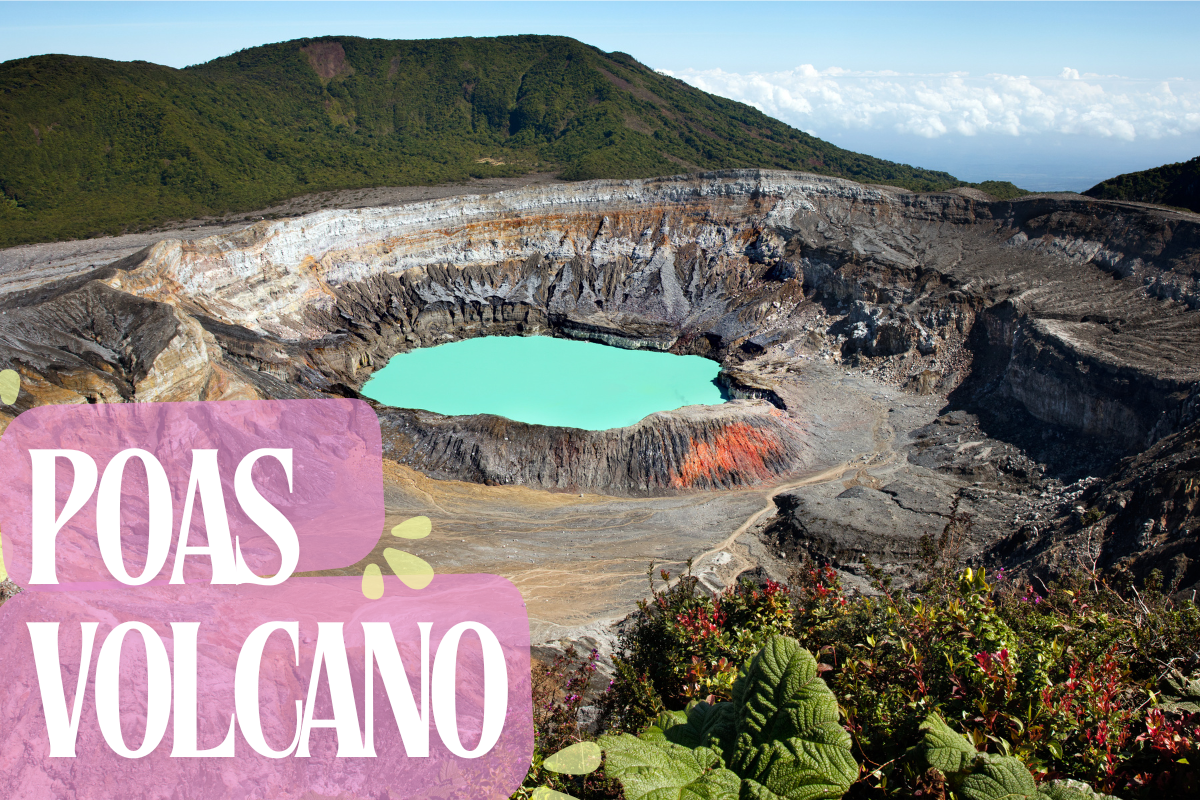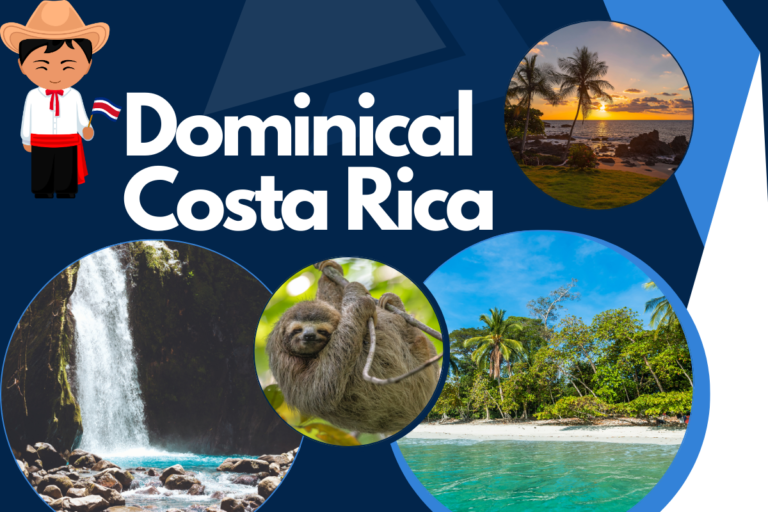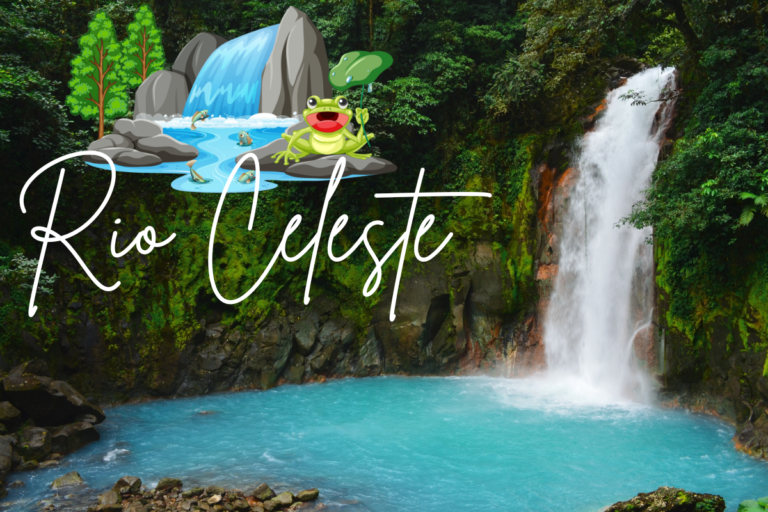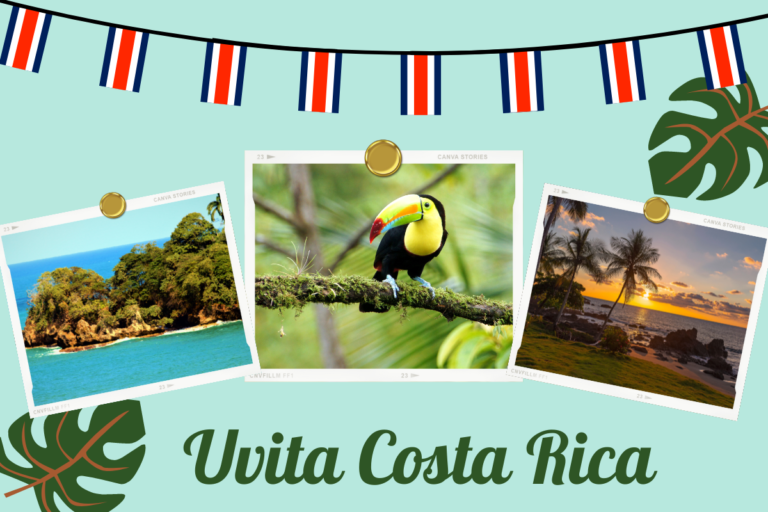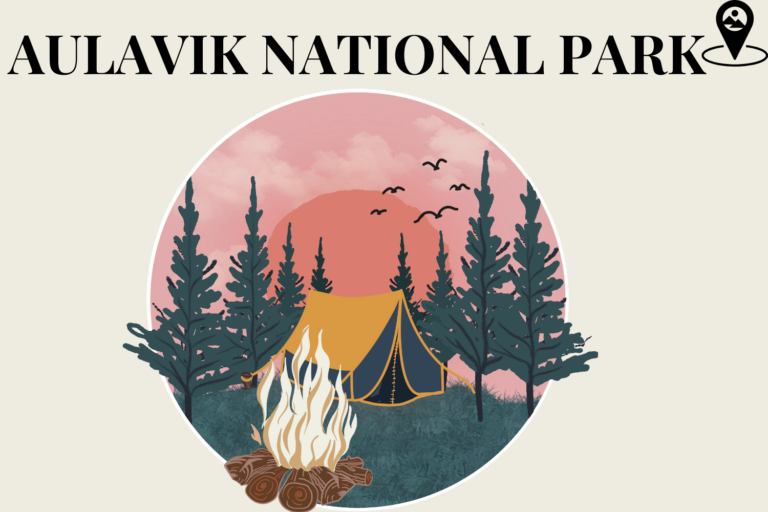Poas Volcano: Costa Rica’s Volcanic Heart You Should Not Miss
Welcome to Poas Volcano, a breathtaking sight that fills you with awe. This amazing giant, set in Costa Rica‘s highlands, is more than just a geological wonder—it’s a vibrant masterpiece where nature shows off bright colours and lush greenery.
Have you ever wanted to visit a place where nature’s power and beauty come together? That’s exactly what Poás Volcano is all about. Let’s explore this amazing natural wonder and see what makes it so special.
This article explores Poás Volcano, why it’s a must-visit, essential activities, nearby attractions, travel tips, and nearby accommodations and dining options.
Poás Volcano’s Location and Majesty
Poás Volcano is one of Costa Rica’s most active volcanoes. It is located in the Alajuela Province. It is a famous spot in Costa Rica. Poás Volcano has a beautiful crater lake, which is very acidic.
The volcano is 2,708 meters (8,885 feet) tall and offers amazing views and interesting rock formations. It is inside a national park where visitors can enjoy the green surroundings, see steam vents, and learn about the local plants, animals, and volcanic activity.
Why Poás Volcano Should Be on Your Bucket List
1. Spectacular Natural Beauty
i. Stunning Crater: Poás Volcano has one of the largest active craters in the world. The turquoise-blue acidic lake inside the crater, surrounded by rough volcanic land, is an amazing sight.
ii. Panoramic Views: The volcano’s high elevation gives visitors wide views of the area, including green forests and rolling hills. On clear days, you can see both the Pacific and Atlantic coasts of Costa Rica from the top.
2. Unique Geothermal Features
i. Active Fumaroles: Inside the crater, you can see steam and gas coming out of vents, showing a unique view of the Earth’s geothermal processes.
ii. Bubbling Mud Pots: Besides fumaroles, there are bubbling mud pots that make the volcano experience even more surreal and unique.
3. Rich Biodiversity
i. Diverse Ecosystems: Poás Volcano National Park features diverse environments. You can experience everything from misty cloud forests to small high-altitude woods. It hosts many plants, including orchids and bromeliads, as well as various animals.
ii. Bird Watching: If you are a bird watcher, then this is a place for you. The park is excellent for bird watchers, with species like the resplendent quetzal, tanagers, hummingbirds, and toucans.
4. Educational Experience
i. Visitor Center: The park’s visitor centre features exhibits on the volcano’s history, eruptions, and ecology. You can take part in Interactive displays and educational programs to help visitors understand Poás Volcano’s natural and cultural significance.
ii. Guided Tours: Those who want to learn in-depth about Poás Volcano can take guided tours
5. Accessibility
i. Proximity to San José: Poás Volcano is about 40 kilometres (25 miles) from San José, Costa Rica, making it perfect for a day trip or a short visit.
ii. Well-Maintained Trails: The park has well-maintained trails and viewing spots, making it accessible for all ages and fitness levels.
6. Adventure and Recreation
i. Hiking: For hiking enthusiasts, the park includes several hiking trails for exploring the natural landscape and enjoying the beauty of the region.
ii. Picnic Areas: The park has designated picnic areas where you can relax and enjoy a meal or snack in a peaceful setting.
7. Cultural and Historical Significance
Historical Context: Poás Volcano is significant in Costa Rica’s history and culture. Learning about its past eruptions and impact on local communities adds a rich historical element to your visit.
8. Conservation Efforts
Visiting Poás Volcano supports conservation efforts. Entrance fees and tourism revenue help protect the park and its ecosystems.
10 Activities to do at Poás Volcano
1. Visit the Main Crater
The main attraction at Poás Volcano National Park is its huge crater, which is one of the biggest active craters in the world. Visitors can safely view the crater and admire the blue-green lake inside it, often seeing steam coming out of the ground.
2. Explore the Botos Lagoon
A short walk from the main crater takes you to the beautiful Botos Lagoon, a cold, clear lake in a crater, surrounded by lush cloud forest. The trail to the lagoon is easy and offers stunning views and chances to see local plants and animals.
3. Hiking Trails
The park has several well-kept trails that go through different types of nature, from cloud forests to volcanic areas. These trails range in difficulty, so they are suitable for all levels of hikers.
4. Wildlife Watching
Poás Volcano National Park is home to many different kinds of wildlife. Look out for birds like the Resplendent Quetzal, hummingbirds, and tanagers, as well as animals such as coyotes, rabbits, and various types of frogs and insects.
5. Photography
Poás Volcano is a paradise for photographers with its dramatic landscapes, unique volcanic features, and abundant wildlife. Capture stunning images of the crater, lagoon, and the surrounding cloud forest.
6. Picnicking
The park has special picnic areas where you can enjoy a meal surrounded by nature. It’s a perfect way to relax and soak in a peaceful environment.
7. Visitor Center and Museum
The park’s visitor centre has displays about the volcano’s geology, ecology, and history. It’s a great place to start to learn more about the area before you explore the park.
8. Geological Observation
For geology enthusiasts, the park offers a unique chance to see volcanic activity and learn about the processes that shape our planet. Information panels along the trails provide details about the volcanic features.
9. Souvenir Shopping
The park has gift shops where you can buy souvenirs, local crafts, and snacks to remember your visit.
10. Enjoy the Scenic Drive
The drive to Poás Volcano is a delight, featuring winding roads with stunning views of the Costa Rican countryside, coffee plantations, and charming small villages.
Quick Tip: Remember to check the park’s status before visiting, as volcanic activity can sometimes lead to temporary closures for safety reasons.
9 Must-Visit Spots Around Poás Volcano
| Places to Visit | Distance from Poás Volcano | Attraction points |
| Poás Volcano National Park | 40 m | The main attractions with trails and viewpoints around the volcano. |
| La Paz Waterfall Gardens | 22 km | See stunning waterfalls, lush gardens, and a wildlife sanctuary. |
| Doka Estate Coffee Tour | 18 km | Learn about coffee production and enjoy fresh tastings at this plantation. |
| Bajo del Toro | 45 km | Explore this scenic area with impressive waterfalls and hiking trails. |
| Parque Juan Santamaría | 28 km | This park is a great spot to relax and experience local culture. |
| Sarchí | 31 km | Known for colourful handcrafted oxcarts and artisanal crafts, it’s a charming town to explore. |
| Vara Blanca | 18 km | A picturesque village near Poás with stunning views and hiking trails. |
| Britt Coffee Tour | 38 km | Coffee plantation tour providing insights into Costa Rican coffee culture and production. |
| Hacienda Alsacia | 18 km | Starbucks’ coffee farm offers tours of their coffee growing and processing. |
9 Points to Note
1. Weather Conditions: Check the weather forecast before your visit, as conditions can change quickly. Cloud cover and rain might affect visibility and access.
2. Park Hours and Entry Fees: Verify the park’s opening hours and entry fees in advance. The park may close temporarily due to volcanic activity or weather conditions.
3. Clothing and Gear: Wear comfortable, sturdy shoes suitable for hiking. Bring layers of clothing, as temperatures can vary, and consider bringing rain gear.
4. Health and Safety: Be aware of health and safety guidelines, especially if you have respiratory issues. The park may have air quality advisories due to volcanic gases.
5. Guided Tours: Consider joining a guided tour to enhance your experience and gain more insights into the volcano’s features and history.
6. Permits and Restrictions: Check if you need any permits or if there are any restrictions on certain areas of the park due to volcanic activity or conservation efforts.
7. Picnic and Refreshments: Bring snacks and water, as facilities may be limited. Respect park rules regarding food and waste disposal.
8. Wildlife and Flora: Respect the park’s wildlife and plant life. Do not disturb animals or pick plants, and follow the park’s guidelines to protect the environment.
9. Travel Time: Plan your travel time to and from the park, as it may take a while to get there from San José or other nearby areas.
Stay & Dine Near Poás Volcano
| Accommodation | Distance | Restaurant | Distance |
| Altura Hotel | 6 km | Restaurante El Descanso | 6 km |
| Poás Volcano Observatory Lodge & Glamping | 7 km | Bar y Restaurante Lo Que Tu Quieras | 6.1 km |
| Hotel La Paz | 10 km | Restaurante Freddo Fresas | 11 km |
| Hotel Chalets Los Volcanoes | 13 km | Restaurante El Sabor de la Montana | 10 km |
| Lagunillas del Poás | 11 km | Terrazas del Bosque Costa Rica | 11 km |
| Chilates Vistas del Poás | 17 km | Restaurante El Volcán | 9.4 km |
| Inspire Costa Rica | 13 km | La Terraza de Luna | 10 km |
Crater and Eruptive History
If we talk about Poás Volcano’s most impressive part then it would be its huge crater. It is one of the biggest volcanic craters in the world. The main crater is about 1.5 kilometres (0.93 miles) wide and around 300 meters (984 feet) deep.
Inside the crater, there is a fumarolic field where gases and steam come out from the Earth’s interior. This creates a strange and otherworldly landscape.
Since Poás Volcano is an active volcano, it has erupted many times over the years. The most important recent eruptions happened in 1953, 1989, and 2017. These eruptions were powerful, sending ash into the sky and changing the shape of the crater.
The 2017 eruption was especially notable because it affected local communities and led to the closure of Poás Volcano National Park. This eruption had strong activity, with ash explosions and lava fountains, which caused problems for air travel and threatened nearby people.
Tidbits On Poás Volcanic Activity
- On May 17, 1953, an eruption began that continued until 1956.
- In 2009, there were minor phreatic eruptions and landslides in the northern active crater.
- On February 25, 2014, a webcam from the Volcanological and Seismological Observatory of Costa Rica (OVSICORI) recorded a dark cloud erupting about 1,000 feet into the air from Poas Volcano’s massive crater.
- On April 14, 2017, two eruptions at 07:39 and 07:57 sent an ash and vapour column over three kilometres into the air.
- On February 11, 2019, the Volcanological and Seismological Observatory of Costa Rica (OVSICORI) reported that an eruption began at 1:50 a.m. Monday, sending an ash column 200 meters above the crater.
- On September 30, 2019, at 05:41, the volcano erupted with ash and solid material, sending a 2-kilometer column into the air. This was different from the water vapour activity observed on September 23, 2019.
- Recently, Poas Volcano National Park was closed to tourists until Monday, April 8, 2024, because of increased volcanic activity.
Ecological Environment
Poás Volcano is located in Poás Volcano National Park, a protected area. The park’s special environment supports many plants and animals that are adapted to the volcanic soil and changing heights.
If we talk about the area around Poás Volcano then it is mostly covered by cloud forests. These forests are very humid and misty, and they host many plants like orchids, ferns, and bromeliads.
The volcanic soils and heavy rainfall helped create several key rivers and streams that flow from the volcano, providing essential water for nearby communities.
Tourism and Conservation
Poás Volcano is a popular spot for tourists and it draws thousands of visitors each year who come to see its dramatic landscapes and geothermal activity. The Poás Volcano National Park provides several amenities for tourists, such as well-kept trails, viewing spots, and informative exhibits.
One of the main attractions in the park is the visitor centre. If you are someone who would love to learn information about the volcano’s history, eruptions, and importance to the environment then this place is a must-visit for you. Guided tours and displays help visitors learn more about the volcano and its impact on the region.
However, the popularity of Poás Volcano also brings challenges for conservation. The high number of visitors can lead to environmental problems like soil erosion, pollution, and disturbances to wildlife.
To tackle these problems, park management has put in place measures to reduce the impact of tourism and protect the area for the long term.
Due to volcanic activity and safety concerns, the park has sometimes been closed to visitors. When there is increased activity, like after major eruptions, access to the crater and some park areas may be limited to keep both visitors and the fragile ecosystem safe.
Impact on Local Communities
- While Poás Volcano is a famous tourist attraction, the eruptions have greatly affected nearby communities. The ash clouds and volcanic gases released during eruptions can harm air quality and pose health risks to local residents.
- Local communities have come up with strategies to deal with the challenges of volcanic activity. Schools and healthcare centres have put measures in place to protect people from ash. Farmers and businesses have adjusted their practices to reduce the impact of eruptions on their work and income.
- Despite these challenges, Poás Volcano continues to be a key part of the region’s culture and economy. Its striking beauty and geological importance shape the local identity and attract tourists, who help support the local economy through their visits.
Scientific Insights into Poás Volcano
Poás Volcano is a major site for scientific research. This is why both national and international organizations monitor the volcano. Researchers study its geological processes, eruption patterns, and geothermal activity to understand the volcano’s behaviour better and improve early warning systems.
To make the research easier, Poás volcano is equipped with various monitoring tools, such as seismometers, gas analyzers, and thermal cameras. These instruments help scientists track changes in volcanic activity, assess eruption risks, and gather important data for emergency response planning.
Wrapping It Up
We can finally say that Poás Volcano is a stunning example of nature’s beauty and strength. It provides more than a glimpse into the Earth’s core; it invites exploration of its history and landscape. From its impressive crater and steaming fumaroles to the diverse plant and animal life on its slopes, Poás showcases the powerful forces that shape our planet.
Visiting Poás Volcano is more than a trip; it’s a journey that enhances your appreciation for Costa Rica’s natural wonders and the Earth. So, bring your curiosity, lace up your hiking boots, and let Poás Volcano inspire you.
FAQs
1. Is Poás Volcano worth visiting?
– Yes, Poás Volcano is definitely worth visiting. It offers stunning natural beauty with its large active crater and panoramic views, unique geothermal features, and rich biodiversity. The park is easily accessible from San José and provides educational and recreational opportunities for visitors of all ages.
2. Where is Poás Volcano located?
– Poás Volcano is located in the Alajuela Province of Costa Rica, approximately 40 kilometres (25 miles) northeast of the capital city, San José.
3. Is the Poás Volcano still active?
– Yes, Poás Volcano is still active. It has experienced several eruptions in recent history, with significant activity as recently as 2017. The volcano continues to show fumarolic activity, with steam and gas emissions from its crater.
4. Why is Poás Volcano famous?
– Poás Volcano is famous for its large active crater, which is one of the largest in the world, and its stunning turquoise-blue acidic lake.
It is also known for its frequent geothermal activity, including steam and gas emissions, and its diverse ecosystems within the Poás Volcano National Park. The volcano’s accessibility and proximity to San José make it a popular tourist destination.

